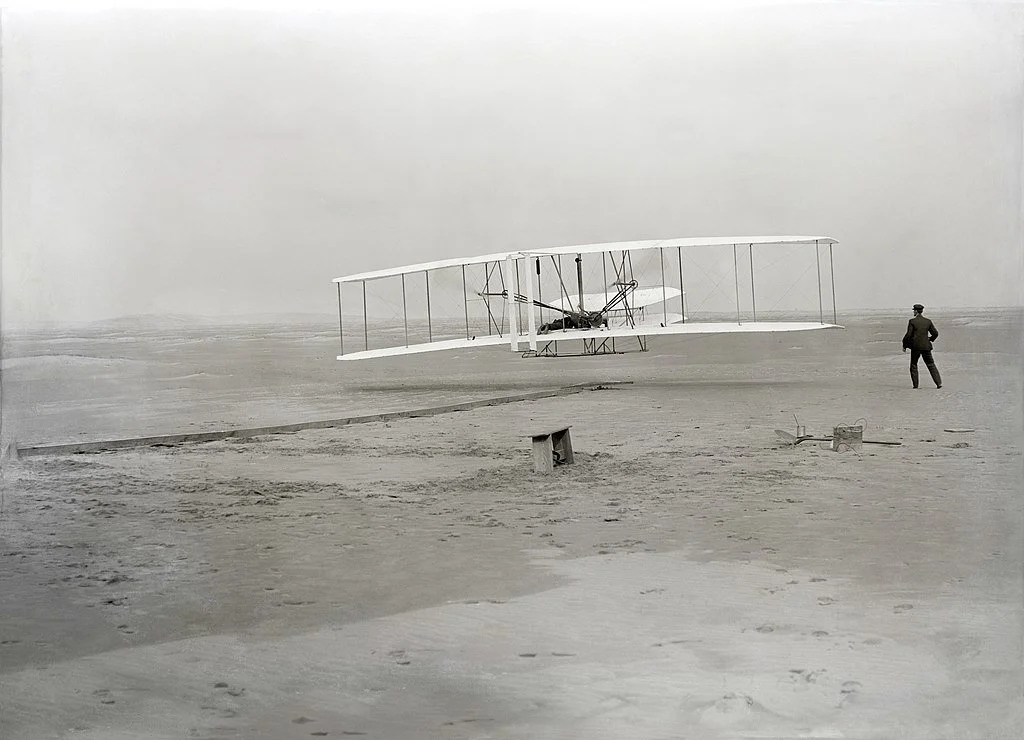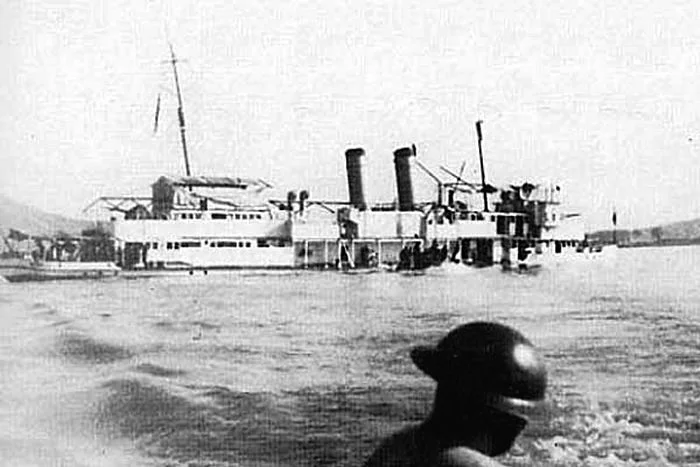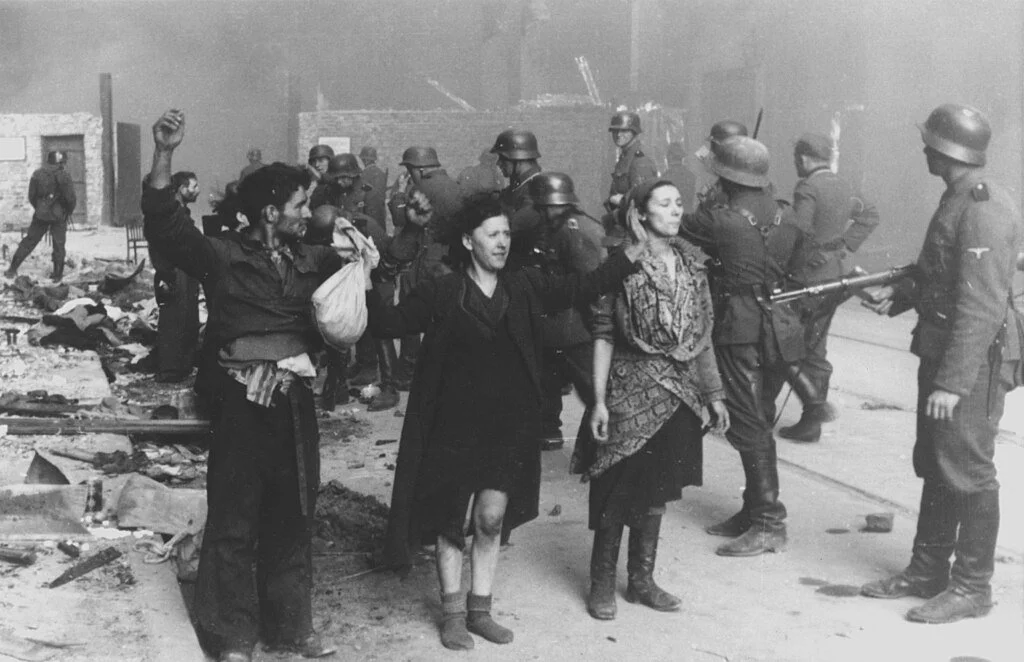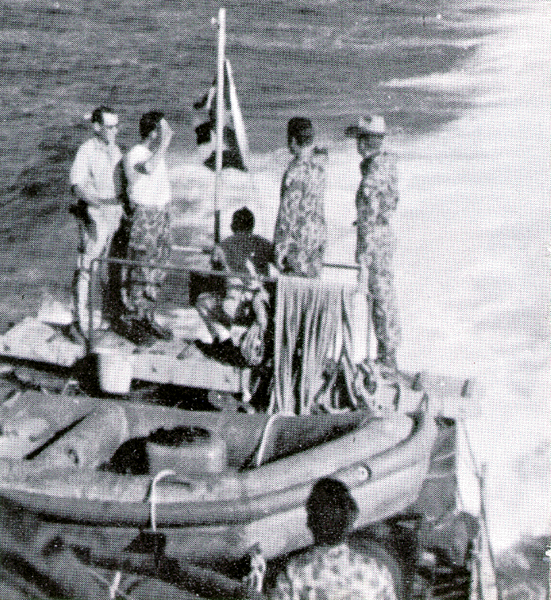Al Capone was born in Brooklyn, New York in 1899. As a young man he moved to Chicago and became involved in prostitution, gambling and, in the 1920s, bootlegging rackets. He became rich enough to buy a mansion in Florida and a bullet-proof car but was convicted of tax evasion in 1931. He served time in federal prisons, notably Alcatraz prison in San Francisco Bay before being released in 1939 after it had become clear he was losing his mind as a result of a case of untreated syphilis. He died of a heart attack at the age of 48, a relatively young man. Besides these basic facts, most other claims about the world’s most famous gangster are fictional. Among the false or unsubstantiated claims frequently made about Capone include the following: He was ‘the boss’ of Chicago; he founded the ‘Outfit’ – an organized crime organization based in Chicago; he orchestrated the St Valentine’s Day Massacre; and finally, he was a participant in a ‘conference’ held in Atlantic City in 1929 that established a nationwide crime syndicate.
Michael Woodiwiss looks at these claims.
Al Capone in 1930.
Capone was never the boss of Chicago rackets, let alone the boss of Chicago. The historian Mark Haller has done the most thorough analysis of Capone’s business activities. The group known to history as the Capone gang,’ he wrote, ‘is best understood not as a hierarchy directed by Al Capone but as a complex set of partnerships.’ Capone, his brother Ralph, Frank Nitti, and Jack Guzik formed partnerships with others to launch numerous bootlegging, gambling, and vice activities in the Chicago Loop, South Side, and several suburbs, including their base of operations, Cicero. These various enterprises, Haller continued, ‘were not controlled bureaucratically. Each, instead, was a separate enterprise of small or relatively small scale. Most had managers who were also partners. Coordination was possible because the senior partners, with an interest in each of the enterprises, exerted influence across a range of activities.’ Like other criminal entrepreneurs, Capone did not have the skills or the personality for the detailed bureaucratic oversight of a large organization. Criminal entrepreneurs are ‘instead, hustlers and dealers, for whom partnership arrangements are ideally suited. They enjoy the give and take of personal negotiations, risk-taking, and moving from deal to deal.’ Haller’s analysis helps to explain why Capone’s removal as a criminal force in Chicago made no difference to the extent of organized crime in the city. There was no ‘Outfit’, although Chicago gangster businessmen after the Second World War might have used the word to describe their loose associations. The Belgian comic strip artist, Herge, basing his research on the hyperbolic claims in Chicago newspapers, referred to Capone as the ‘Boss of Chicago’ in Tintin in America (1931) and many thousands more in True Crime books, documentaries, movies and TV shows simply repeated similar assertions without substantiation.
Capone’s notoriety reached a peak on February 14, 1929, St Valetine’s Day. At a garage at 2122 North Clark Street, seven of the associates of North Side gangster George ‘Bugs’ Moran were waiting for a shipment of illegal liquor. A Cadillac drew up and five men, two in police uniforms, got out and entered the garage. They disarmed the Moran men, who assumed it was the inconvenience of a routine raid and did not object. They were lined up against a wall, as if for a search, and then suddenly sprayed with machine-gun bullets. No one survived. Capone was in Florida at the time but was soon thought to be responsible. The murders remained unsolved.
Atlantic City and the ‘Conference’ that Wasn’t
The Atlantic City gangster “conference” story began life as a credible account by Al Capone of a trip he made to the New Jersey resort in May 1929. The newspaper and magazine reports of this visit at the time were based almost entirely on Al Capone himself as a source. There have been countless reconstructions since, in books, articles, television documentaries and Martin Scorsese’s TV series Boardwalk Empire, yet Capone remains the only credible source for the story.
Capone was arrested for carrying a gun in Philadelphia on May 16, 1929, a day after he had been in Atlantic City, and told police investigators the following:
I have tried hard to stop all this killing and gang rivalry. That was my purpose in going to Atlantic City. It was a peace conference. I engineered it. Some of the biggest men in the business in Chicago were there. ... “Bug” Moran, leader of the north side gang, ... and three or four other Chicago gang leaders were there [emphasis added]. We talked over our trouble and at the end agreed to sign on the dotted line, bury the past and forget warfare for the general good of all concerned.
This was reported on 18 May in the Atlantic City Daily Press, the Philadelphia Inquirer, the New York Tribune and the Los Angeles Times. So, that was the word on the Atlantic City “conference” from the only known witness consulted. Capone and three or four other Chicagoans talking about peace.
The exaggeration of Capone’s account began with the publication of a book by Walter Nobel Burns, The One-Way Ride: The Red Trail of Chicago Gangland from Prohibition to Jake Lingle, in 1931. Burns upped the number of conference attendees to “about 30 veterans” of Chicago gang wars from the “North, South and West Sides” of the city. Other journalists would by then have taken note that Burns’ inflation of the numbers was not challenged.
The fictionalization of Capone’s account had already begun in November 1929 with the publication of a short story by Damon Runyon in Cosmopolitan magazine. Runyon was by then one of the most popular American authors, turning out mainly tales of low-life for the publication group owned by William Randolph Hearst. In the story “Dark Dolores,” his narrator relates how he was “persuaded” by “Dave the Dude” to catch a train to Atlantic City to attend a “big peace conference” to settle a gang war going on in St. Louis between three rival mobs. It would have been clear to readers that St. Louis stood for Chicago and that one of the mob leaders, “Black Mike” – “an Italian with a big scar on his face” – stood for Capone. The popularity of Runyon’s stories would have assured that the ‘conference’ entered popular consciousness.
After Runyon’s story the fictionalization process took a big step forward with the printing of a photograph in the New York Evening Tribune on January 17, 1930. It showed Capone walking next to the political boss of Atlantic City, Enoch “Nucky” Johnson. The picture looks fake – Capone’s wearing heavy winter clothes, Johnson’s in light summer clothes. However, the alliance between corrupt politics and gangdom implied by the juxtaposition of the nation’s most notorious gangster with a machine politician chimed with the dominant perspective on organized crime at this time.
There was little more published about the Atlantic City “conference” until Hickman Powell’s Ninety Times Guilty in 1939. Powell was the first author to claim that Runyon’s imaginary “interstate” conference was actually true. He wrote: “In May 1929, Al Capone went to a peace conference in Atlantic City,” and elaborated that “The last year had been bloody. There had been the killing of Frank Yale in Brooklyn, the Valentine’s Day massacre in Chicago, and various minor killings.” “Frankie Costello, the slot machine man,” he continued, “who has never been one to encourage violence, arranged the meeting and spent twenty-five thousand dollars of his own money on it. Various gang chieftains were entertained for several days at the Hotel President.” Powell does not mention a credible source for these claims. He did not have to – True Crime books and articles weren’t required to reference their sources.
Powell went further than merely paraphrasing a fictional account. He sowed the seeds of what became the mainstream interpretation of organized crime history, supported by most writers, film directors and – most damagingly – by the US government. “The aim of the Atlantic City conference,” he claimed, “was to establish peaceful co-operation in the underworld instead of warfare.”
Consolidating the “Conference” Legend
On December 10, 1940, the Hearst newspaperman Jack Lait made a reference to the mythical Atlantic City meeting, as he praised the efforts of the IRS against “syndicate” criminal and corrupt politicians. “There’s a convention in New York ... Its [sic] a gathering of top gangsters and racketeers of the nation. Such get-togethers are not uncommon. They have been held in Chicago, Miami, Atlantic City, Phoenix, Providence and other points.”
It must have been a lengthy New York convention since he repeated the column almost verbatim on July 22, 1949 – nine years later. The only difference was a subeditor’s correction to Lait’s omission of an inverted comma in the first version: “It’s a gathering of gangsters and racketeers ...” The federal policing agencies were singled out for praise as the only answer to such evidence of nationwide organization and super-government among hoods:
And a shudder of fear has the mob geniuses shaky. They haven’t forgotten what happened to Al Capone, “Lucky” Luciano and “Nucky” Johnson ... They know that whenever the Feds really try, they can get these malefactors of great stealth, for they are all venal and vulnerable, they have influence beyond calculation, but when the G-boys are ordered from up above to close in, nothing can help them.
This was the first time the politician Johnson was mentioned in connection with the Atlantic City “conference,” albeit indirectly, and it was not as the host in the way later writers embellished the story.
In 1950, the year after the second of Lait’s reports on the alleged conference, Senator Kefauver read and later endorsed a book that Lait co-wrote with another journalist, Lee Mortimer: Chicago Confidential. Kefauver was preparing for an influential investigation of organized crime. The federal policing agencies were singled out for praise by politicians and journalists alike as the only answer to such evidence of nationwide organization and super-government among hoods.
Lee Mortimer was another newspaper columnist for the Hearst newspaper chain who specialized in scurrilous stories about celebrities. The Confidential books feature the two main preoccupations of post-war America—communism and organized crime—in an amalgam of racial and political bigotry. The only evidence they provide about the American Mafia indicates that the concept originated in the paranoid imagination of reactionaries. The Mafia, according to Mortimer and Lait, was
The super-government which now has tentacles reaching into the Cabinet and the White House itself, almost every state capital, huge Wall Street interests, and connections in Canada, Greece, China and Outer Mongolia, and even through the Iron Curtain into Soviet Russia.
The organization is ‘run from above, with reigning headquarters in Italy and American headquarters in New York’. It ‘controls all sin’ and ‘practically all crime in the United States’, and is
an international conspiracy, as potent as that other international conspiracy, Communism, and as dirty and dangerous, with its great wealth and the same policy—to conquer everything and take over everything, with no scruples as to how.
Kefauver’s senate investigation into organized crime encouraged rather than discouraged such hyperbole.
Mafia?
In 1959, Frederic Sondern, a journalist who relied on agents from the Federal Bureau of Narcotics (FBN) for his sources, made the claim that not only were Atlantic City “conference” gangster delegates from across the whole of the United States, but that they were all members of the Mafia. The ‘Mafia’ at this time was thought to be a single centralized organization of Italian-Americans that allegedly controlled organized crime in America. In Brotherhood of Evil: The Mafia, he claimed:
… Capone issued invitations to the senior capi Mafiosi of Chicago, Detroit, New York, Philadelphia and several other big centers to meet in Atlantic City in May 1929. ... It was the Atlantic City gathering that made underworld and Mafia history ... The Sicilians listened as Capone explained a project on which he had been working for some three years – a nationwide syndicate and organization, not only for bootlegging but gambling, prostitution, labor racketeering and various kinds of extortion as well ... At Atlantic City a series of peace treaties for the Chicago, New York and other areas was hammered out and ratified – without documents and signatures but with a validity that lasted a long time. It was the fundamental design and unwritten constitution of the modern American Mafia.
Sondern had taken Hickman Powell’s imaginative reconstruction of the Atlantic City “conference” and made all the significant participants Italian American in line with the FBN’s propaganda contention that organized crime in the US was controlled by a single Italian entity.
In 1965, one of America’s best-known journalists, Walter Winchell, added his prestige to the Atlantic City “conference” mythology. Winchell was in a sense the voice of the “gangbuster” since he was the narrator of the popular Untouchables television series. In his syndicated column, he wrote:
It was Capone who organized the nation-wide crime syndicate ... In May 1929 the mob chiefs gathered in Atlantic City at Capone’s invitation ... There they organized their operations on a more business-like level ... They operated like any big business ... Recognized leaders, standard rules of procedure and periodic meetings. ... If the black flag of the underworld were to unfurl atop one of the tallest skyscrapers in New York it would be a fit symbol of how the Mafia has gained control of that building and many other real estate holdings.
By this time most of the American law enforcement community, as well as the rest of the America media, shared the kind of interpretation articulated by Winchell, and given official sanction by President Lyndon Johnson’s Commission on Law Enforcement and the Administration of Justice in 1967. “Today,” according to the Commission’s report, “the core of organized crime in the United States consists of 24 groups operating as criminal cartels in large cities across the Nation. Their membership is exclusively Italian, they are in frequent communication with each other, and their smooth functioning is insured by a national body of overseers.”
The report offered very little historical substantiation for its claims besides the following short paragraph:
The present confederation of organized crime groups arose after Prohibition, during which Italian, German, Irish and Jewish groups had competed with one another in racket operations. The Italian groups were successful in switching their enterprises from prostitution and bootlegging to gambling, extortion, and other illegal activities. They consolidated their power through murder and violence.
The only known source for a “history” that implied that only immigrants participated in organized crime was Sergeant Ralph Salerno of the New York Police Department. Dwight Smith, a colleague of Salerno, has detailed the ways in which Salerno provided as much historical and analytical substance as the commission required in its efforts to justify a large increase in policing resources and powers to combat what it saw as a security threat to the United States. Accuracy was not the commission’s concern.
The commission’s work culminated with the Organized Crime Control Act of 1970 that was significant nationally and internationally in establishing a widely accepted template for organized crime control. In a book published in 1969, Salerno and his co-writer, John S. Tompkins, confirmed an acceptance of Atlantic City “conference” mythology. After detailing Capone’s conviction and imprisonment on tax evasion charges in 1931 and the shootings of John Dillinger and other bank robbers, they asserted that, “Unnoticed during all of the hoopla about sending Capone to prison and the FBI’s war on crime, major crime itself was organized at a meeting in Atlantic City in 1931, and the details worked out over the next few years.” By moving the mythical meeting from 1929 to 1931, the authors had managed to prevent the only known source for the alleged convention or conference – Al Capone – from attending it altogether.
By the 1970s there was no limit to the imagination and deceit of True Crime writers when it came to descriptions of the Atlantic City “conference.” In 1971, Hank Messick devoted six pages to the event in Lansky, a biography of the Jewish American gangster businessman who founded something Messick called the National Crime Syndicate. Lansky, Messick claimed, was the real inspiration for the gathering of mobsters – not Capone, Luciano or Costello. Messick embellished the story in three ways. First, by adding claims and details on Enoch Johnson. Instead of being just being the subject of the probably doctored photograph walking along the city’s Boardwalk beside Capone, Johnson now “ruled a criminal-political empire” in the resort who could be depended upon to “entertain the boys in style.” Second by making up conversations between Lansky, Luciano and others that happened four decades earlier and could have no other source than Messick’s imagination. Finally, giving the names of long-dead ‘gang chieftains from all over the U.S.A.’
The Last Testament of Lucky Luciano
Messick’s imaginative reconstruction of the conference was soon outdone by Martin Gosch and Richard Hammer in The Last Testament of Lucky Luciano (1975). The book project was initiated by Gosch, Hammer was a crime journalist brought in later. Gosch was usually described as a film producer, although confidence trickster is a better description.
According to Gosch’s account, Lucky Luciano himself had told him that he was the central player in the Atlantic City “conference.” Luciano had asked him to be his “Mr. Boswell” in 1961, a year before he died. The heart attack happened, appropriately and, in terms of publicity, profitably, when Luciano was meeting Gosch at Naples airport on January 26, 1962. The 1961 deal, according for Gosch, was for Luciano to record his life story to Gosch on tape and for it to be written up and published ten years after his death. According to Gosch, Luciano said he wouldn’t “hold back nothin’” and that the money gained would be “an annuity” for Gosch and his wife, Lucille.
The paperback rights of Last Testament were auctioned for $500,000, a serialization appeared in Penthouse magazine the year before publication and the book was chosen as main selection by both the Book-of-the-Month club and the Playboy Book Club. Its success was based largely on the publisher’s claim that it was the life story of Lucky Luciano as dictated by the Mafia boss himself before his death in 1962. Last Testament, however, was a fake, based mainly on hearsay accounts written by Hickman Powell and others. It quotes Luciano as saying that he was at meetings and events during the time that he was in prison – it even quotes him talking about an event that happened two years after he died. Faking True Crime books was made easier at the time since, as noted earlier, they were not required to have notes indicating the sources of their frequently outlandish claims. Gosch himself did not benefit from the hoax since he died just before the book was published. There was, however, clearly “an annuity” for his wife.
Gosch and Hammer added several more gangsters to Messick’s list: “Purple Gang” leader, Abe Bernstein, Willie Moretti from New Jersey, John Torrio, and Dutch Schultz, Albert Anastasia, Vince Mangano and Frank Scalise. Gosch and Hammer, like Messick, invented dialogue and put Nucky Johnson at the center of events that followed the alleged refusal of one hotel to let the imaginary group of lowlifes in, “So Nucky picks Al up under one arm and throws him into his car and yells out, ‘All you fuckers follow me!’” Johnson then, according to Gosch and Hammer, laid on “a constant round of parties, with plenty of liquor, food and girls.” This is quite a leap given the only evidence of Johnson’s presence was a photograph showing him in summer clothes walking besides Al Capone in winter clothes on the Atlantic City boardwalk. The Atlantic City “conference” was a good base for a story, however, as the author of Boardwalk Empire (2010), “The true story that inspired the HBO series,” must have realized. He uncritically used The Last Testament as one of his main sources. Biographies of Capone written after The Last Testament reference the book as if it were a legitimate source. Even scholarly criminologists have used the made-up dialogue as if it were real.
Calling Capone’s meeting with fellow Chicago gangsters in Atlantic City a ‘Conference’ was itself an exaggeration, calling it a conference with gangsters from across the United States setting out to control organized crime throughout the whole country was pure invention. There is no doubt that Italian-American gangsters such as Capone and Luciano in America have been among the most prominent gangsters since the Prohibition years. The dispute is over the identification of organized crime almost exclusively with Italian Americans and the suggestion that organized crime is some sort of alien transplant onto an otherwise pure political and economic system. Thanks to fanciful accounts of the Atlantic City ‘Conference’ and other variations of Mafia mythology, many people, in every part of the world, not just in America, believed that something called the Mafia ran organized crime in the U.S. for decades. By constantly highlighting a centralized super-criminal conspiracy, set up after a series of conferences following Atlantic City, U.S. opinion makers ensured that people’s perception of organized crime was as limited as their own. The constant speculation, hyperbole, preaching, and mythmaking served to confuse and distract attention away from failed policies, institutional corruption and much systematic criminal activity that was more damaging and destructive than the undeniable criminal activity of the likes of Capone.
Did you find that piece interesting? If so, join us for free by clicking here.
References
Michael Woodiwiss, Double Crossed: The Failure of Organized Crime Control (London: Pluto, 2017)
William Moore, The Kefauver Committee and the Politics of Crime (Columbia: University of Missouri Press, 1974).
Frederic Sondern, Brotherhood of Evil: The Mafia (London: Panther, 1961).
President’s Commission on Law Enforcement and the Administration of Justice, The Challenge of Crime in a Free Society (Washington, DC: Government Printing Office, 1967).
Ralph Salerno and John S. Tompkins, The Crime Confederation, (New York: Popular Library, 1969), p. 275.
Hank Messick, Lansky (London: Robert Hale, 1971).
Tony Scaduto, Lucky Luciano (London, Sphere Books, 1976).
Martin Gosch and Richard Hammer, The Last Testament of Lucky Luciano (Boston: Little, Brown and Company, 1975), p. viii.
Nelson Johnson, Boardwalk Empire (London: Embury Press, 2010).
David Critchley, The Origin of Organized Crime in America: The New York City Mafia, 1891–1931 (New York: Routledge, 2009).
Damon Runyon, Guys and Dolls and Other Stories (London: Penguin, 1997).
Marc Mappen, Prohibition Gangsters: The Rise and Fall of a Bad Generation (London: Rutgers University Press, 2013).
Hickman Powell, Ninety Times Guilty (London: Robert Hale, 1940).
Jack Lait and Lee Mortimer, Chicago Confidential (New York: Crown, 1950)
















